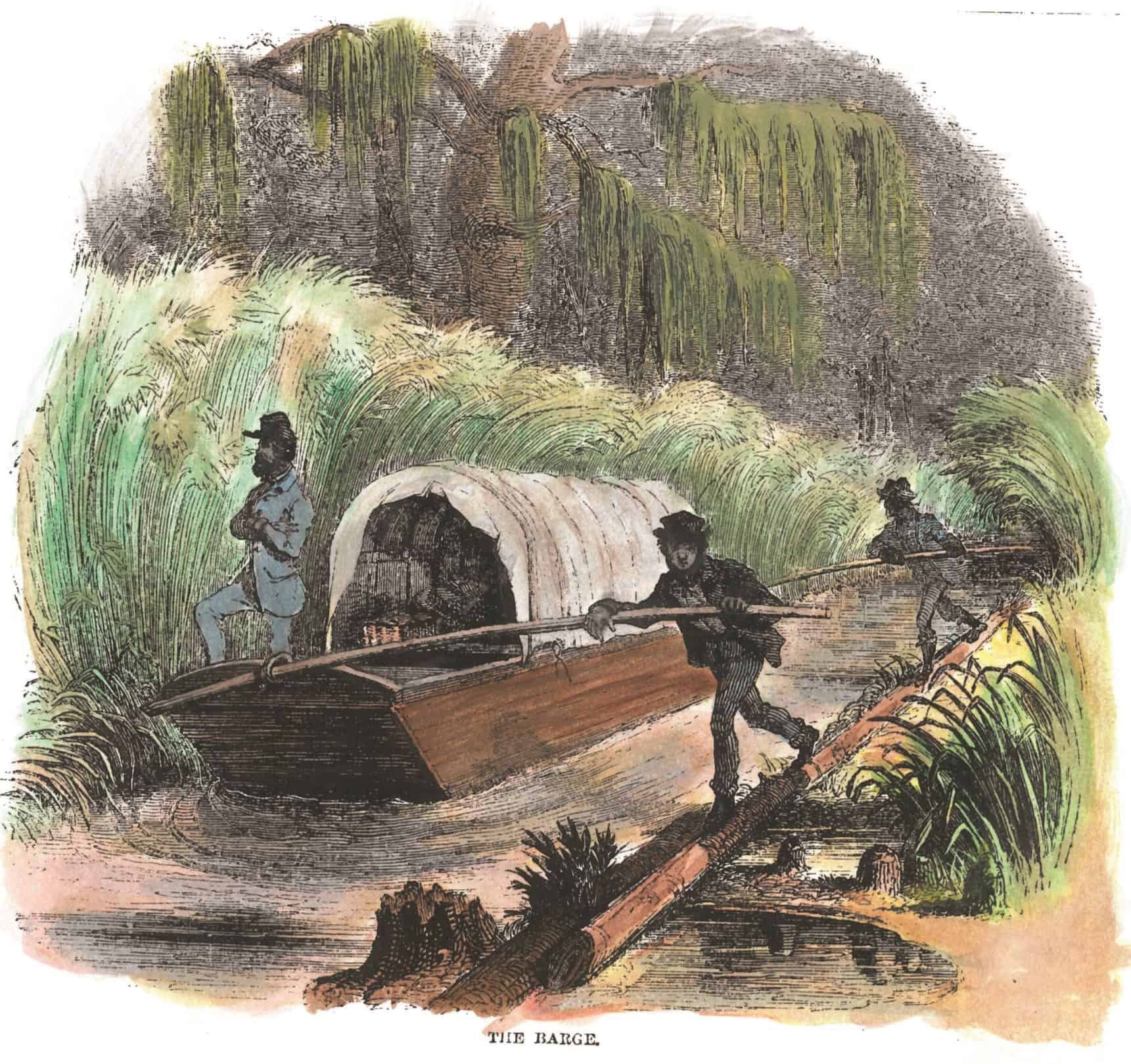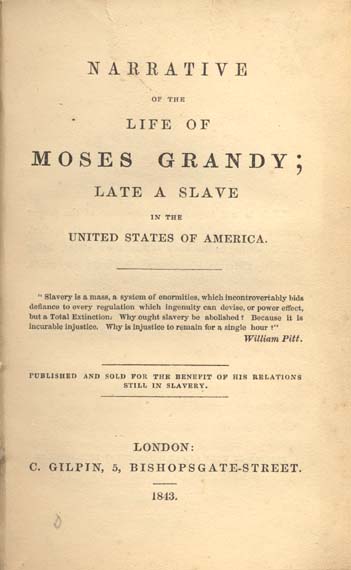Captain Moses Grandy
Moses Grandy was born into slavery in Camden County in 1786 and as a child became very interested in maritime occupations. As a result of his skills as a river ferryman, canal boatman, schooner deck man, and lighter captain, he became known as Captain Grandy. William Grandy, a prominent slave owner in Camden County was Moses’s first slave master. William’s son, James, inherited Moses in 1794 and hired him out annually to various owners to tend ferry along the Pasquotank River and haul lumber in the Dismal Swamp.


Illustration by Porte Crayon, Edited by Tara Ferguson. Great Dismal Swamp, Harper’s Magazine 1856 page 444.
Moses, a successful waterman, was allowed to purchase his freedom from James Grandy for $600. Following payment by Moses, James then sold him. His new owner allowed Moses to buy his freedom for another $600. After two and half years of work, Moses had saved the money to purchase his freedom, only to be cheated out of his earnings and release again. Finally in 1827, Captain Edward Minner purchased Moses from Enoch Sawyer and allowed him to live as a free man. Captain Grandy repaid Minner and continued working on boats traveling to New York and Philadelphia. Moses eventually settled in Boston to avoid capture and re-enslavement after Captain Minner’s death.

Image courtesy of NCCollection, Wilson Special Collections Library, UNC-Chapel Hill.
In 1842 Moses sailed to London and met with abolitionist George Thompson, who penned Grandy’s life story. Proceeds from Narrative of the Life of Moses Grandy; Late a Slave in the United States of America were used to help liberate Grandy’s enslaved relatives. Slave narratives like Grandy’s were used by anti-slavery movements in the United States and Britain to demonstrate the cruelty of slavery. Moses recounted his story throughout his travels and addressed the World’s Anti-Slavery Convention in 1843.
Learn more about Moses Grandy’s incredible story and historical impact through interpretive panels, brochures and literature. Interpretive panels are located at the Dismal Swamp State Park’s Visitor Center and the Camden County Heritage Museum. Grandy’s narrative is also available online: http://docsouth.unc.edu/fpn/grandy/grandy.html.
Sources: https://www.ncpedia.org/biography/grandy-moses
Additional Reading Materials:
Narrative of the Life of Moses Grandy, Late a Slave in the United States of America by Moses Grandy (free text available online)
Boy in Chains by John Bushore
“…And Remember That I Am A Man.” The Life and Times of Moses Grandy by John Bushore
Two Captains from Carolina: Moses Grandy, John Newland Maffitt and the Coming of the Civil War by Bland Simpson
North Carolina Slave Narratives: The Lives of Moses Roper, Lunsford Lane, Moses Grandy & Thomas H. Jones by William L. Andrews
The Waterman’s Song by David S. Cecelski
African American Heritage Brochure- Camden County, NC
